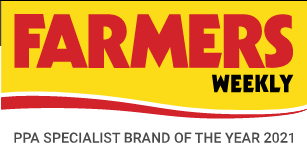Document type : article published in Farmers weekly
Author: Hannah Fitzsimmonds
Preview: A study by vet Jay Tunstall, published by the University of Liverpool, estimated the mean prevalence of lameness in the UK beef herd at 8.3% in finishing cattle (with a range of 2% to 21.2%) and 14.2% in suckler cows (ranging from 0% to 43.2%). What is interesting about these figures is the range, with some finisher and suckler cow herds having really low lameness prevalence. This is great, and it shows there are farms that we (as vets and farmers), can learn from to support the reduction of lameness on some holdings with higher lameness levels.
Financial effect of lameness
Lameness is a welfare problem - whatever the initial cause, it is largely a painful condition. It also affects the efficiency of meat production, with beef finishing cattle in the UK showing an average 240g reduction in daily liveweight gain if they are lame once they are in the finishing period. (...)
What is causing the lameness?
The University of Liverpool research showed that for sucklers and finishers, having a white line disease lesion or overgrown claws are two major causes of lameness. Digital dermatitis can, anecdotally, be an important cause of lameness to get on top of in some beef herds. (...)
Handling facilities
Having the means to safely lift all four feet for inspection is important: while hind limb lameness is more common, we see more lameness in front feet in beef cattle than their dairy counterparts. (...)
Practical tips for reducing lameness in the beef herd
Use herd health planning time with the vet to look at the beef herd with a pair of fresh eyes. This will help to establish a benchmark figure of lameness ● Farmers in England can use the Animal Health and Welfare Pathway grant to work with your vet on lesion identification and treatment protocols ● Attend a foot first aid course, run by many vets across the country, to refresh your knowledge and upskill for when you are trimming your cattle's feet ● Make use of the various grants available to upgrade handling facilities for safe examination of all four feet so you can treat lame cattle promptly ● Enroll the services of a qualified foot-trimmer (check the Cattle Hoof Care Standards Board or National Association of Cattle Foot Trimmers for locating qualified trimmers), especially if handling facilities are a challenge or there are several cattle to examine.




